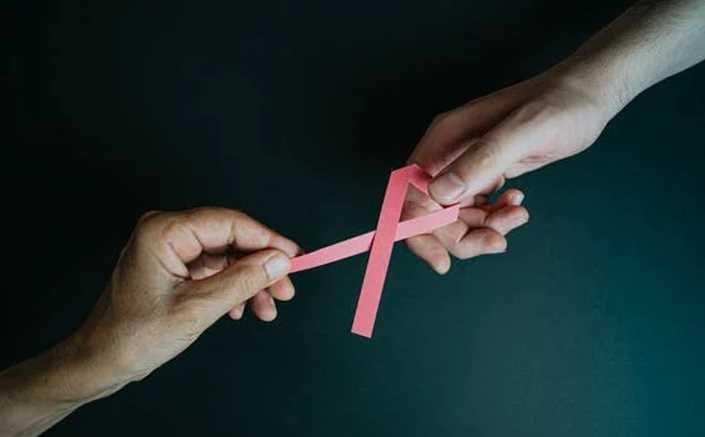There are different types of breast cancer, and each type is classified according to the way the cancer cells look under a microscope. The most common type of breast cancer is ductal carcinoma, which begins in the milk ducts. Lobular carcinoma begins in the milk-producing glands, and other less common types include inflammatory breast cancer, Paget’s disease of the nipple, and sarcomas, which develop in the breast’s connective tissues. Here is a brief overview of the different types of breast cancer, as well as some tips on how to deal with each type.
1. Ductal Carcinoma
Ductal carcinoma is the most common type of breast cancer, accounting for about 80% of all cases. It begins in the milk ducts and usually forms a lump that can be felt in the breast. Ductal carcinoma is typically treated with surgery, radiation therapy, and/or chemotherapy. Additionally, breast cancer symptoms such as nipple discharge or changes in breast appearance may be treated with hormone therapy or targeted therapies. It’s important to catch ductal carcinoma in its early stages, as it is more likely to spread to other parts of the body if it is not treated promptly.
2. Lobular Carcinoma
Lobular carcinoma begins in the milk-producing glands and accounts for about 10% of all breast cancer cases. This type of cancer is typically more difficult to detect than ductal carcinoma, as it does not usually form a lump that can be felt in the breast. Lobular carcinoma is often treated with surgery, radiation therapy, and/or chemotherapy. Additionally, hormone therapy or targeted therapies may be used to treat symptoms such as nipple discharge or changes in breast appearance. It’s important to catch lobular carcinoma in its early stages, as it is more likely to spread to other parts of the body if it is not treated promptly.
3. Inflammatory Breast Cancer
This is a very aggressive form of breast cancer in which the cancer cells block the lymph vessels in the skin of the breast. This type of breast cancer is usually diagnosed at a later stage because it does not cause a lump or any other usual symptoms of breast cancer. The symptoms include:
– Swelling of the breast
– Redness of the skin on the breast
– Warmth in the affected breast
– Pain in the breast
– Nipple discharge
Treatment for inflammatory breast cancer includes chemotherapy, radiation therapy, and surgery. If cancer has spread to other parts of the body, additional treatment may be necessary.
4. Paget’s Disease of the Nipple
This is a rare type of breast cancer that affects the skin around the nipple. The first symptom is usually an itching or burning sensation in the nipple. In some cases, the nipple may also become red and crusty. Paget’s disease can also cause the nipple to bleed or discharge fluid. Treatment for Paget’s disease may include surgery to remove the affected area of skin, radiation therapy, or chemotherapy. Additionally, you may be advised to avoid any irritants, such as perfumes or lotions, that could make the symptoms worse.
5. Sarcomas
Sarcomas are rare tumors that develop in the connective tissues of the breast. The two types of sarcomas that can affect the breast are angiosarcomas and liposarcomas. Angiosarcomas develop in the blood vessels, and liposarcomas develop in the fatty tissues. Symptoms of sarcomas can include a lump or mass in the breast, pain, and/or changes in the appearance of the breast. Treatment for sarcomas typically includes surgery to remove the tumor, radiation therapy, and/or chemotherapy. If cancer has spread to other parts of the body, additional treatment may be necessary.
6. Phyllodes Tumors
Phyllodes tumors are rare, benign tumors that develop in the connective tissues of the breast. These tumors can grow very large, but they are not cancerous. Additionally, phyllodes tumors can become cancerous, so it’s important to have them checked out by a doctor. If you have a phyllodes tumor, you may need surgery to remove it. It’s important to note that not all phyllodes tumors require treatment. This type of tumor is typically found in women over the age of 50.
7. Ductal Carcinoma in Situ (DCIS)
Ductal carcinoma in situ (DCIS) is a non-invasive type of breast cancer. It means that the cancer cells are still confined to the milk ducts and have not spread to the surrounding breast tissue. DCIS is usually diagnosed with a mammogram before it can be seen or felt as a lump in the breast. DCIS is treated with a combination of surgery and radiation therapy. The most common type of surgery is a lumpectomy, which involves removing the cancerous tissue from the breast. This may be followed by radiation therapy to kill any remaining cancer cells.
8. Lobular Carcinoma in Situ (LCIS)
Lobular carcinoma in situ (LCIS) is non-invasive cancer. LCIS is considered a risk factor for developing invasive breast cancer in either breast later on. LCIS usually presents as a cluster of small cells in the lobules (milk-producing glands) of the breast. It is important to note that LCIS is not considered true breast cancer, as the abnormal cells do not invade surrounding tissues. LCIS is often found incidentally on a biopsy performed for another reason. It may also be found on a mammogram or ultrasound as an area of increased density. Treatment of LCIS typically involves close monitoring with regular mammograms and breast exams. Some women may elect to have preventive surgery, such as a bilateral mastectomy (removal of both breasts) or a bilateral prophylactic salpingo-oophorectomy (removal of the ovaries and fallopian tubes).

Breast cancer is a serious disease that can have a devastating impact on your health. It is important to be aware of the different types of breast cancer and the symptoms to watch out for. If you think you may have breast cancer, it is important to see a doctor right away. Early detection is key to successful treatment. There are many different treatment options available for breast cancer, so it is important to discuss all of your options with your doctor. If you have been diagnosed with breast cancer, there are many resources available to help you cope with your diagnosis and treatment.



